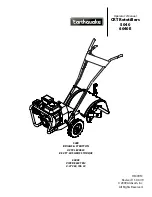
7
Optimizing Your Method
Modifying an Automatic Tune
Thermo Scientific
ISQ User Guide
95
–
Lens 3
—Select this option to control Lens 3, which is the last of three lenses that
the ions see as they leave the ionization region. These three lenses act as a
focusing element to maximize the ion beam intensity that is entering the ion
guide. This field is typically set near the same voltage as lens 1.
–
Ion Guide DC
—Select this option to control the ion guide’s DC offset voltage.
It can potentially help focus the ions into the quadrupole while ensuring that
neutral noise is eliminated. The voltage on this component is mass dependant
and should be set at several different masses. This field is typically set b1
and -15 V, depending on the mass of the ion.
–
Ion Guide RF
—Select this option to control the ion guide’s RF voltage. It can
potentially help focus the ions into the quadrupole while ensuring that neutral
noise is eliminated. The voltage on this component is mass dependant and
should be set at several different masses. This field is typically set between 0 and
+5 V, depending on the mass of the ion.
–
Q1
—Select this option to control the voltage that pulls the ions into the
quadrupole. The voltage applied to this component will have a very strong effect
on the energy of the ion beam, which will have a strong effect on the resolution
and the intensity. The lower the voltage, the better the resolution. However,
higher voltages will pull more ions into the quads, which leads to better signal.
This field is typically set between 0 and -5 V.
–
Resolution
—Select this option to adjust the ratio of the quadrupole DC and RF
voltages to create the resolution required for your analysis. You can set the desired
peak width at a given mass and whether you measure the width at 10% or 50%
of the peak height. Because there is no static DC voltage involved, the start, stop,
and step values are not used.
•
Mass
—Use this pull-down menu to select the ion to be used for tuning.
•
Start
—Use this field to enter the starting voltage for the tune. The start voltage must
always be less than the stop voltage. For example, -35 is smaller than 0.
•
Stop
—Use this field to enter the final voltage for the tune.
•
Step
—Use this field to enter the increment for the tuning range. For example, if you
tune from 0-50 in increments of 10 V, then you would set the
Step
field to 10.
•
Max Width
—Use this field to enter the maximum allowable width of the ion during
the tune.
•
Measure at %
—Use this pull-down menu to select the location on the peak at which
you want to measure the maximum width.
–
10
—Select this option to measure the width at 10% of the peak height.
Note
If the start and stop values are the same value, the device will be set to that value and
ignore the step size. You may notice that in some tunes devices are set to a value before
tuning them in another line. This is done because ramping devices will not allow the tune
to run at values higher than those chosen for higher masses for the same device.
Содержание ISQ
Страница 1: ...ISQ User Guide 1R120555 0003 Revision D January 2013 ...
Страница 22: ......
Страница 54: ......
Страница 82: ...4 Creating a Method Creating a Method for the GC 60 ISQ User Guide Thermo Scientific ...
Страница 124: ......
Страница 148: ......
Страница 152: ......
















































